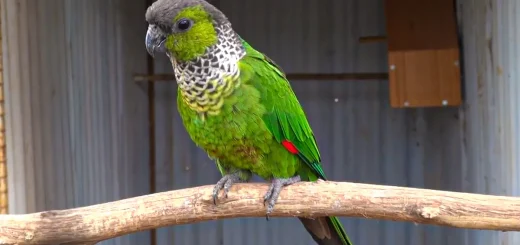Zebra Finches bird Species profile

Description of the Zebra Finches
There are numerous species of birds, but one of the most popular as pets is the zebra finches. This breed is hard to care for and relatively easy, so it is an excellent choice for the new owner. Zebra finches generally entertain themselves without much interaction with the pair and their owners, making them a good choice if you don’t have a lot of time to spend with your birds. Other finches are more brightly colored, but few successes are easier than zebra finches.
Common names
Zebra fins are sometimes called chestnut-yard finches and spotted-pared finches. Australian indigenous names include Nyi-Nyi and Nyeen-ka
Scientific name
The taxonomical name for zebra finch is Pephala guitar.
Zebra Finches Origin and history
Zebra finches live in dry areas of Central Australia and still have large herds. They can be found in Indonesia and East Timor. Zebra Finch has also been launched in Costa Rica and Portugal, where wild flocks now exist. Preferred habitats include a range of grass fields and forests, especially near water.
Volume
A mature java finch from about 4 inches long to the end of the tail fires, making it one of the smaller (though not smaller) fins.
Zebra Finches lifespan
In general, birds have an expected lifespan anywhere from 3 to 15 years, although 3 to 5 years are common.
A broader understanding of the species differences here and the increase in their livestock can lead to diabetes, especially.
The mood
Zebra finches are small birds and active and fun to play, but vocal when it comes to it (its chirps and peeps are easy for most people to bear).
Although small, the zebra finches require a fairly large cage to accommodate the flight room. All finches should be kept socially and in pairs- and a male and female pair is usually quite easy to grow, so you may want to consider having only females. Some people recommend keeping them in groups larger than their joints or six. Of course, if keeping more than a pair, you will need a larger cage such as a flight cage or fowl. When they are social with each other, zebra finches are not birds that are strongly trusted by people (though they get pretty bad) they are good to look at but not manageable.
Zebra Finches colors and markings
Zebra finches are attractive birds and can be easily distinguished from dimorphic-males females. In a local environment, men have black and white bars on the neck and breasts, orange cheek patches, and brown on the side of the body. Both men and women have red-orange fins, though the male color is very bright. A wide variety of color variations are now available in captive-carved birds
Caring for Zebra Finch
While keeping zebra finches, the height of the cage is not as important as having room to fly horizontally, so it is acceptable in long but short cages.
It’s a good idea to get the biggest cage you can – a good size for a pair of 30 inches long, 18 inches high and 18-inch wide java finches. If you are going to get a large group, you will need a birdwatch or flight cage. These can be built in-house, but keep in mind that excellent hygiene is a must, so any cage should be easy to clean. Wire spacing should be 1/4 inch to 1/2 inch.
Provide a variety of symptoms, but make sure the cage is not snappy enough that the finch cannot fly back and forth. For perches, you can use dolls of different sizes, or add some natural branches, perhaps angling them to provide different so their legs are not always holding onto the perches in the same manner. A few short clips can give the AP a little privacy in the position of a bird since one or two finches can sit on them at the same time.
If possible, provide some plant cover in perches to allow for privacy You can use silk plants or non-toxic live plants.
Swinging and ladders can be provided, though the stairs can be used as wide for climbing. Small bells or hanging toys may also be included, although Finney is generally not very interested in toys.
More
If you want fin cages in a quiet, safe location in your home (although the warmest climates can be acclimated to outdoor aviaries in Finch) Jute tolerates a white range of temperatures but avoid placing them in direct draft areas or air conditioning ducts near direct sunlight or heat. Birds do not desire social interaction with humans, so apart from Tora, they do not have to be in a busy social part of their home. Actually, they will likely be less focused whenever kept in a calm corner.
Providing fresh drinking water daily, some guards prefer tube-style pirates, others attach to the cage (to enter the cage) or to the floor (away from the pier to reduce trash with vomiting). Whatever you use, make sure there is always a fresh clean water supply and clean everyday food dishes.
The food sheets can be placed on the floor (not covered) or attached to the side of the cage. Once more, these should be cleaned day by day.
A shallow toilet should be provided several times a week for bathing. The bath water should be cleaned, so remove the bathwater as soon as it becomes dirty.
A few people utilize full range lighting for their finches. This is especially helpful in controlling molting and reproductive behavior, but it is not strictly necessary for the average pet jaw finch.
Feeding the Zebra Finches
Your finch is a good quality finch seed mixture to eat, although this should never be the only food. Check the seeds for freshening up by spraying (put something in a plastic bag with a damp paper towel) – the seeds should be eaten too much if they do not have roots. Seedling seeds are an excellent way to increase nutrients, as the seeds are at the root of their nutritional value,
Mills sprays are a preferred treatment of most finches, but birds offer them very little in order to eliminate the barrier to developing a preference for picking other foods.
Greens should be offered, including romaine lettuce, dandelion greens, kale, and spinach (with modifications), various fresh herbs and fruits (no avocado, though). Finding out what they like and offering different types, as it may take your finches to try a few new food items. Remember, the size of these foods should be small.
Jewelry provides excellently balanced nutrition and offers excellent as part of a varied and balanced diet. Ensure good quality jewelry formulated especially for fins; You need to be strong in order for your Finn to accept them.
Read More
Eggfood is a supplement that is very important for breeding birds but it can be fed regularly with non-breeders. You can purchase a monetarily arranged egg nourishment to enhance or set up your own.
Some types of calcium supplements are recommended, and a cuttlebone is an easy way to add calcium to the diet, such as sneezing shells or even eggshells (preheated to prevent salmonella contamination).
The role of the particles is still highly debated when it comes to the finish. Most avian vets do not recommend any summer for finches, as they eat their seeds if you do not fold, but only provide a few mathematical and minimal breaks at a time, especially mineral roots.
Exercise
These little birds get most of their exercise from direct line flight across the cage, as well as climbing perches and branches as the cage or the bird are large enough to allow some flight, they don’t need much more in the way of exercise.
General health problems
The jaws may suffer from fractures in the mouth of the membrane caused by the finch germ, which requires treatment by a predator. Zebra finches are prone to air-sac mite infections, especially when overpressured. If this bird is to survive, this critical condition will require immediate veterinary care – seek help immediately if your bird is short of breathing.
More pet bird species and more research
Thanks For Visit.









